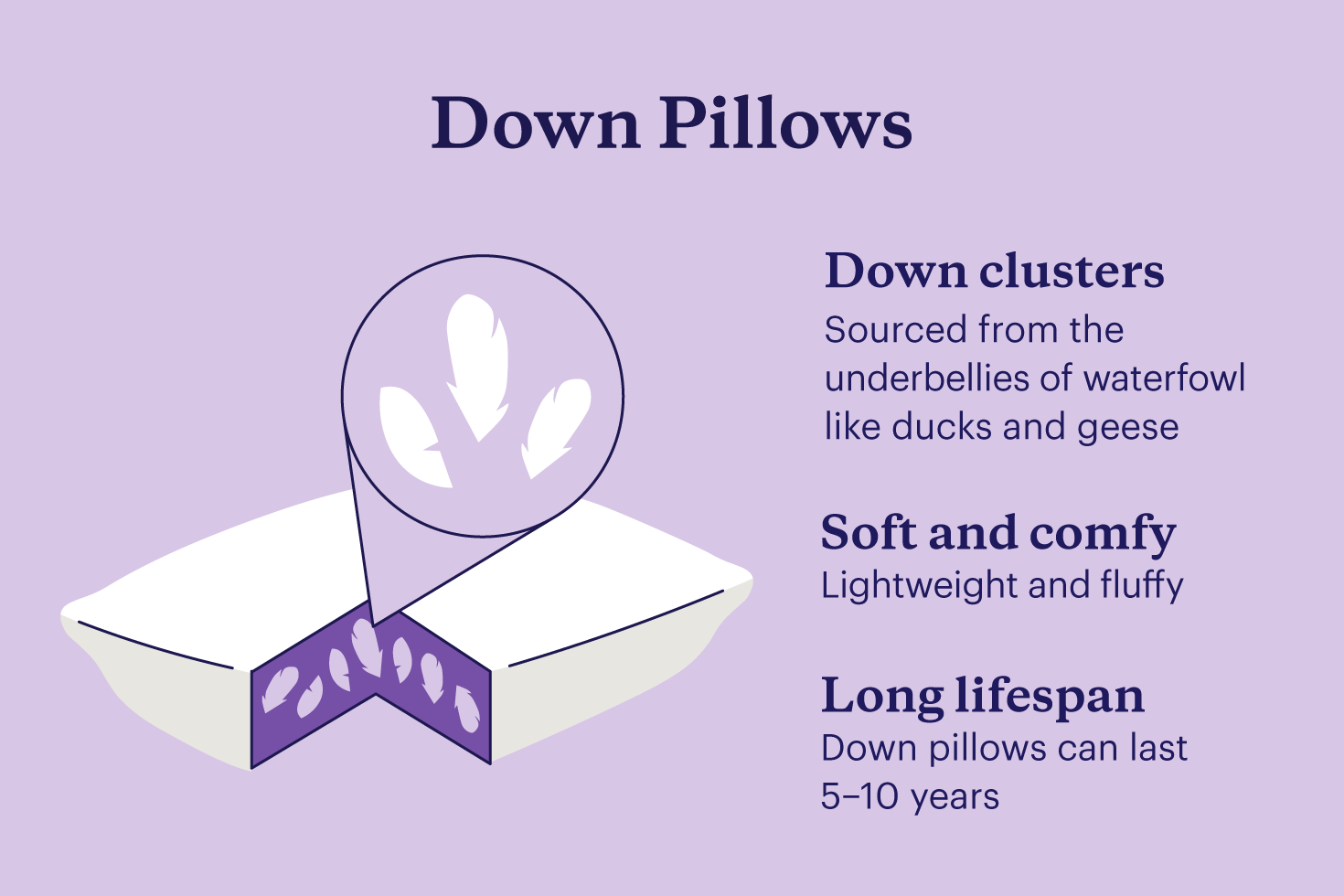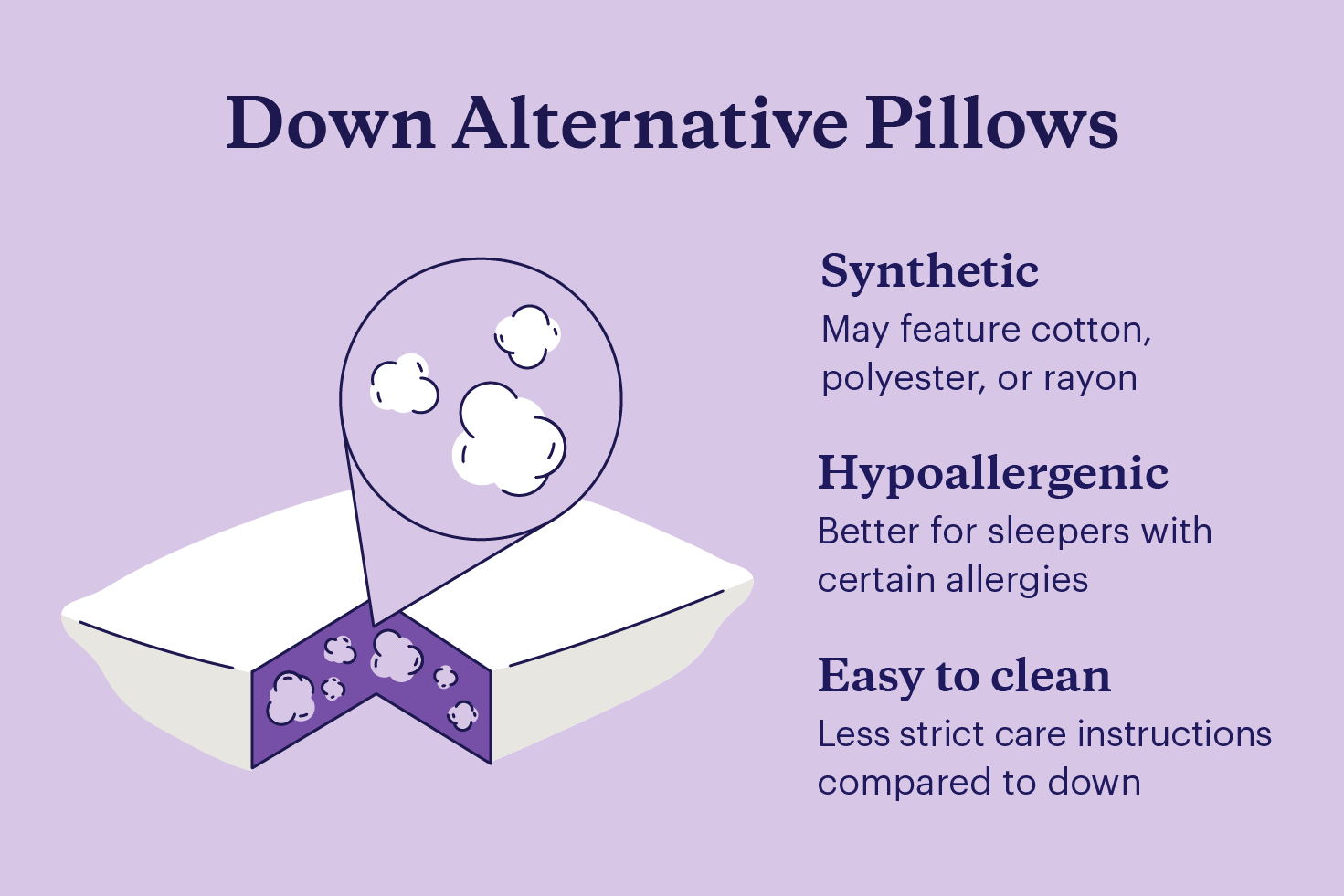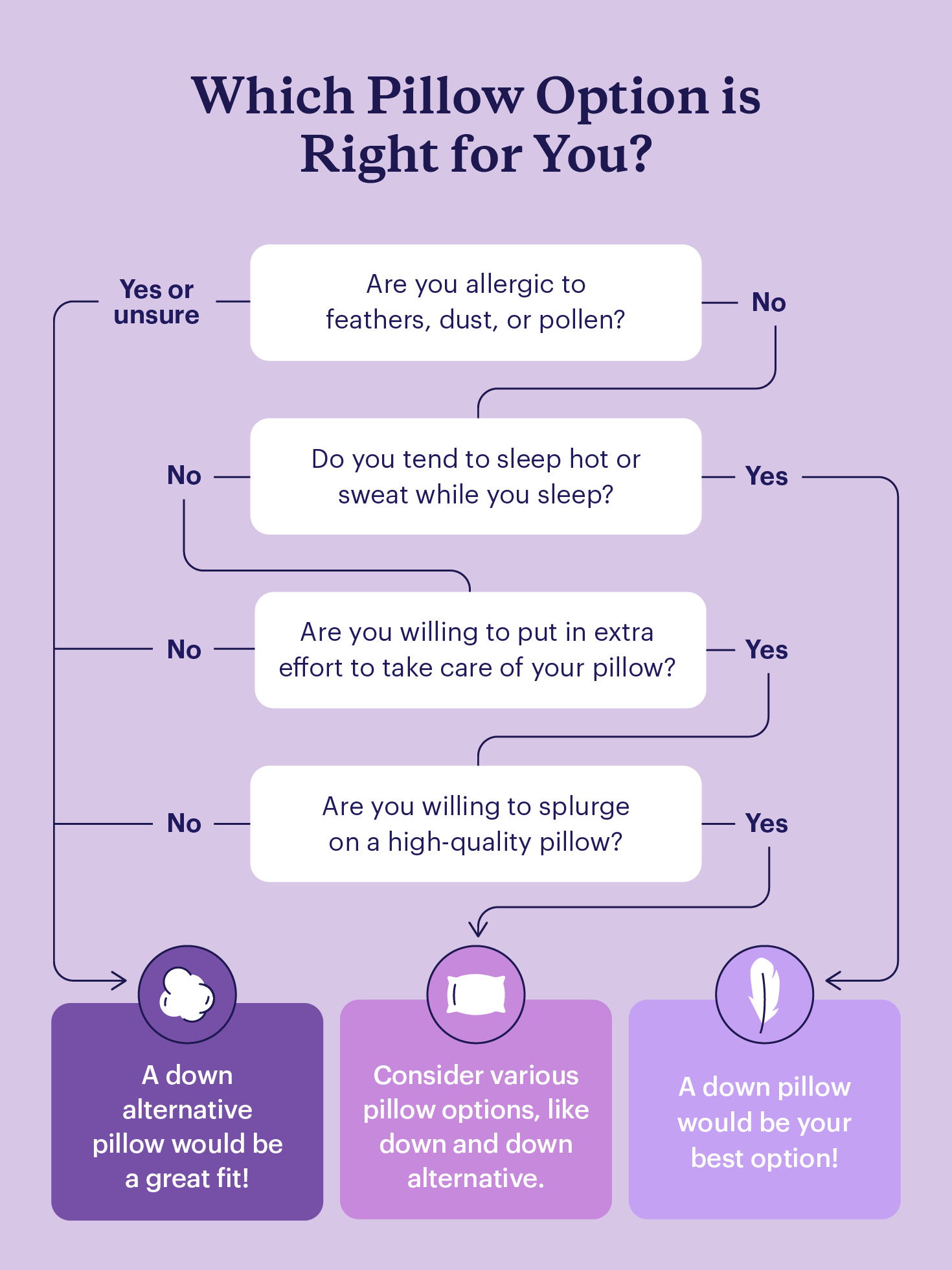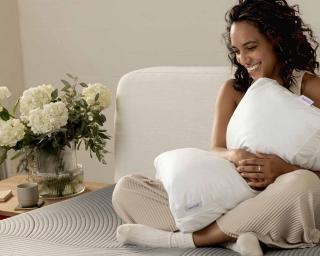
Down vs. Down Alternative: Pros, Cons, and Recommendations [Guide]
The main difference between down and down alternative lies in the composition of the filling. Down comes from the soft underlayers of geese and ducks. It features fine, fluffy fibers that provide exceptional insulation while allowing for breathability. In contrast, down alternatives are made from synthetic materials. They mimic the softness and comfort of down while often being more budget-friendly.
The type of fill material in your pillows plays a crucial role in creating the perfect sleep environment, whether you're chasing that plush, welcoming feel of a hotel pillow or a cozy, budget-friendly alternative like down or synthetic fills. For a pillow that offers a soft, airy feel, you may find your best options include down and down alternatives.
For many, the choice may hinge on personal preferences or specific needs. For instance, individuals prone to allergies might find that down alternative better suits them. Understanding the differences between down vs. down alternatives is essential for making an informed decision and choosing the perfect pillows for your needs.
Read along to learn more about the key differences between down alternative vs. down.
What Is Down Material?
Down is a type of filling for pillows, duvet inserts, comforters, and blankets. It’s made from authentic down feathers from the underbellies of geese and ducks. Down bedding is famously lightweight, with an especially fluffy nature that holds its composition well over time.
Note that down filling is different from feather filling. Where feathers have a quill, down clusters do not, providing a soft, cushiony feel. While both come from waterfowl, they vary in softness and supportiveness. Down consists of fine, soft fibers that trap air and provide insulation, creating a cozy sleeping experience. Check out our guide on down pillows vs. feather pillows for a more detailed comparison.
Benefits | Considerations |
Excellent insulation | Higher cost |
Lightweight and fluffy | Not hypoallergenic |
Long-lasting comfort | Careful washing needed |
Who Is Down Best For?
- People who have no ethical objections to products sourced from animals;
- People who do not have animal allergies;
- People who need extra-warm bedding.
What Is Down Alternative Fill?
Down alternative fills use various fabricated alternatives to achieve the same effect as down. These types of fillings don’t come from animals but from hypoallergenic materials like polyester, rayon, and cotton.
Down alternative provides comfort similar to traditional down. It's also more affordable and easier to maintain. Its hypoallergenic nature makes it a popular choice for those looking for supportive pillow stuffing without the concerns associated with animal products.
Benefits | Considerations |
Hypoallergenic | May lack the warmth of down |
Affordable option | Requires more filling |
Easy to maintain | Less durable than down |
Who Is Down Alternative Best For?
- People who may be allergic to goose and duck feathers;
- People who prefer products not sourced from animals;
- People who want the comfort of down but are looking for a more affordable option.
Down | Down Alternative | |
Fill Power | X | |
Allergies | X | |
Breathability | X | |
Maintenance | X | |
Durability | X | |
Price | X | |
Washability | X |
Down vs. Down Alternative: How to Choose
When you’re faced with a down or down alternative when picking your pillows, duvet, or comforter, it’s essential to consider several factors, such as your available budget, preferred pillow replacement rate, and the sleep preferences of anyone else using your bed.
To help you make an informed choice, let’s delve into the pros and cons of down vs. down alternatives.
Fill Power
Recommended: Down
Fill power is a measure of the loft, insulation efficiency, and overall quality of down used in pillows. It represents the number of cubic inches that one ounce of down occupies, with higher fill power indicating larger down clusters, superior fluffiness, and better durability.
If you prefer your bedding to feel light and warm, then you’ll likely benefit from fillings with a high fill power, such as down. You also don’t need a lot of ultra-fluffy down material to fill a pillow or duvet since super warm and fluffy down beddings tend to also be lighter in weight.
Allergies
Recommended: Down alternative
Down material can trigger symptoms in people who are prone to allergies. It doesn’t just contain allergens from birds, but pollen, dust mites, and other allergens found in plants and animals. Bird feathers and down also tend to trap more skin cells and dust mites than down alternative fillings.1
As such, down alternative is a great hypoallergenic option compared to down if you suffer from bedroom allergies.
Breathability
Recommended: Down
Despite its insulative properties, down filling is notably breathable because you don’t need a lot of down material to fill your bedding depending on its fill power. This ability to trap air naturally gives down fill bedding a cloud-like feel and appearance.
On the other hand, down alternative requires more filling to provide as much insulation as down. In warmer weather, you can explore different types of bed sheets designed for breathability to enhance your sleep.
Maintenance
Recommended: Down alternative
Not all down products are machine-washable and dryable. Those that are require special care. You’ll need to use mild detergent and the lowest setting on your machine. You’ll also have to use the low heat setting on your dryer – high temperatures do not bode well for down filling. Some people find washing bulky down comforters or duvet covers at home too cumbersome and send them off to a laundromat instead.
In contrast, down alternatives are generally easier to maintain. Many down alternative pillows and bedding items are machine-washable. This convenience lets you clean your bedding and disinfect your pillow without any worries.
Durability
Recommended: Down
For those prioritizing durability in their bedding, down often stands out as the better option. When comparing down and down alternatives, it's clear that while down alternatives may be more convenient to wash, this can lead to quicker deterioration and clumping from frequent washing.
However, that’s not to say that down alternative isn’t durable. Down alternative can still last for years if you replace your pillows frequently and take proper care of the material.
Price
Recommended: Down alternative
Sourcing down is costly and labor intensive, making authentic down filling more expensive than synthetic alternatives. While some may hesitate due to the cost of pillows, others find that investing in down products is worth it due to their durability and comfort.
Washability
Recommended: Down alternative
Down alternatives often have a more user-friendly washability than traditional down products. You can throw many down alternative pillows in the washing machine for regular cleaning. However, down pillows require special care, including specific wash settings to avoid damage.
If you prefer to wash your pillow frequently, down alternatives may streamline this process. Although they may not offer the same luxurious feel as down.
Your Personal Preference
Recommended: One that aligns with your unique preferences
Ultimately, personal preference plays a significant role in determining which material is best for you. Down is sourced from birds and is thus not a sustainable or vegan-friendly bedding filling. Washing down bedding requires more care and attention than washing down alternative bedding.
For some, the amount of time and care it takes to wash down bedding can be a deal breaker. Weigh the differences between the materials and consider your unique preferences to choose the one that best fits your needs.
Upgrade Your Sleep With Purple
Choosing between down and down alternative pillows can significantly impact your comfort and sleep quality. Whether you’re not a fan of the down’s warmth or are looking for a sustainable, hypoallergenic option for your beddings, consider Purple’s range of down alternative pillows.
Try out our Cloud™ Pillow, TwinCloud™ Pillow for a cloud-like comfort from dusk to dawn. To find the perfect fit for your sleep preferences, compare our pillows and discover how the right fill can transform your night.
FAQ
Down typically lasts longer than down alternative. Down is a hardy material; if you take proper care of it, it can provide comfort and support for many years. This makes it a worthwhile investment for long-term use.
Whether down or down alternative is better depends on your needs and preferences. Down and down alternatives each have their pros and cons. Down is higher quality and is more durable. On the other hand, down alternative is typically made of hypoallergenic materials and is more affordable and easier to wash.
If you use a down alternative duvet, you may want to consider having separate duvets for winter and summer for optimal comfort. Down duvets with a higher fill power may trap more heat, making them cozy in winter but uncomfortable in the summer. On the other hand, a down duvet with a moderate fill power may be comfortable all year long.
When considering down vs. down alternative, down alternative typically offers a slightly firmer feel while still being soft and fluffy. Down typically provides a more light, fluffy, soft feel than down alternatives.
Side sleepers may find down pillows less supportive than down alternatives. Since down tends to compress under pressure, it may not provide the necessary elevation to maintain proper spinal alignment. Premium manufacturers may offer down pillows in low, medium, and tall loft options; no matter what material you prefer, side sleepers may want to choose a medium to tall loft pillow to help support their neck and shoulders. When shopping, look for options that are often listed among the best pillows for side sleepers, as these are specifically designed to provide the firmness and loft needed for optimal comfort and alignment.
More To Explore
Level up your sleep routine with our most-loved products.













